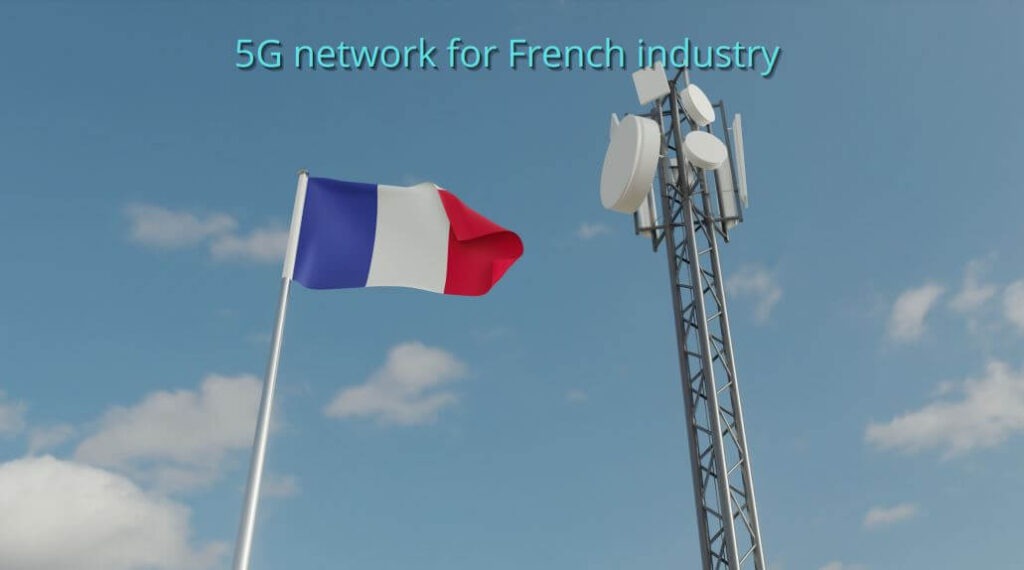5G France: The French government is now offering industrial 5G through the regulator Arcep to achieve the 4th industrial revolution. As we already know 5g is not just an evolution of telecommunication technology. It is the fundamental platform for the Fourth Industrial Revolution and will become an integral part of societies and political infrastructures such as roads, energy and transport. Its most radical ability is to transfer huge amounts of data in real-time.
According to the development plan set by Arcep in France, many municipalities have currently benefited from the 5g coverage. The installation of these antennas always continues in a progressive way and with the achievement of the final goal to ensure the development throughout the national territory.
The deadline for the completion of the project was set in November 2030.
5G For Businesses
For businesses, 5G is a huge opportunity to grow their business model. For example, construction companies will be able to rely on more flexible and efficient production tools. A car company will be able to assemble personalized car models in real-time. But beyond the construction industry, 5G will be revolutionary in services. 5G will allow the simultaneous interaction of the consumer with the product at all levels, such as targeting, recommendation, display of personalized content, social networking, online shopping, transactions, etc.
The great potential of 5G also lies in its geographical revolution. Education and health services can now be provided remotely even in very remote geographical areas. High value-added services can be provided remotely, as the professionals who provide them can now be transported away from the large urban centers that are costly for businesses.

5G in France Industrial
According to the presentation of the report by the Chairman of the 5G Industrial Mission, Philippe Herbert, Agnès Pannier-Runacher, (Minister in charge of Industry), and Cédric O, (Minister of Foreign Affairs) in charge of digital switchover and electronic communications, announced several new measures, including launching a Franco-German call for projects dedicated to 5G industrial issues.
Philippe Herbert and the government vowed to enable access to 2.6GHz frequencies to stimulate industrial 5G projects, along with exploring potential access to the 3.8GHz and 4GHz bands.
The government is supporting 7 new projects that are a dominant bid and support cutting-edge R&D, for a total investment of € 47 million, including € 19 million in public funding under France 2030.
- Spectronite’s 6G Hauling project aims to define a new generation of transport networks for mobile providers by integrating cognitive radio technologies in the perspective of 5G and 6G developments.
- The Alcatel Submarine Networks 32+ fiber pair project envisages the development of an underwater optical telecommunications system that supports increasing the number of fiber pairs to 32 or more to enable Petabit / s capacity. This project provides for a major overhaul of all equipment.
- The WeAccess 5G Convergence project, in collaboration with Arelis-LGM and Grolleau, aims to develop a comprehensive 5G “standalone access” solution for the development of small 5G sites. This solution can be used for use cases related to spatial planning.
- Firecell’s GEO 5G project in collaboration with Stellantis, Axians, Euroutils, Miodex, TMF, AW2S and Sequans aims to use 5G private networks to develop an innovative highly accurate indoor tracking system for connected tools. This project will be tested in a French factory of the Stellantis group.
- Seamless Waves’ I-COM 5G project develops next-generation electronic chips that are recyclable, safe and extremely low-power for 5G base stations and defense and security applications.
- Kapteos’ TopTen project, in collaboration with CEA-Leti and Telecom Paris, aims to develop an innovative antenna test solution. It is a universal measurement platform that covers all the needs of industry players, from research to production, without the need for an audible chamber, multiple sensors, or continuous recalibration.
- Ekinops’s Simbade project, in collaboration with IDIL, Le Verre Fluoré, Orange, PhLAM Laboratory and Photonics Bretagne, conducts industrial multi-band optical transmission (DWDM) research beyond Zone C, allowing a 10-fold increase in bandwidth on the existing network.
In conclusion, regardless of whether anything changes due to political developments, the main goal of the program, which falls under the broader investment plan France 2030, is to strengthen the country’s competitive position in the development and production of future network technologies, especially in business and industry.



